|
Dexter Neo (梁员荣) I am a PhD student at the School of Computing Science at the National University of Singapore (NUS), advised by Professor Tsuhan Chen and co-advisor A.P Stefan Winkler . I also served as a teaching assistant for CS4243 Prior to my PhD, I obtained my Master's in Computer Science (AI) from NUS, and my Bachelor's in Engineering from University of Glasgow (First Class Honours). Email / GitHub / Google Scholar / LinkedIn |
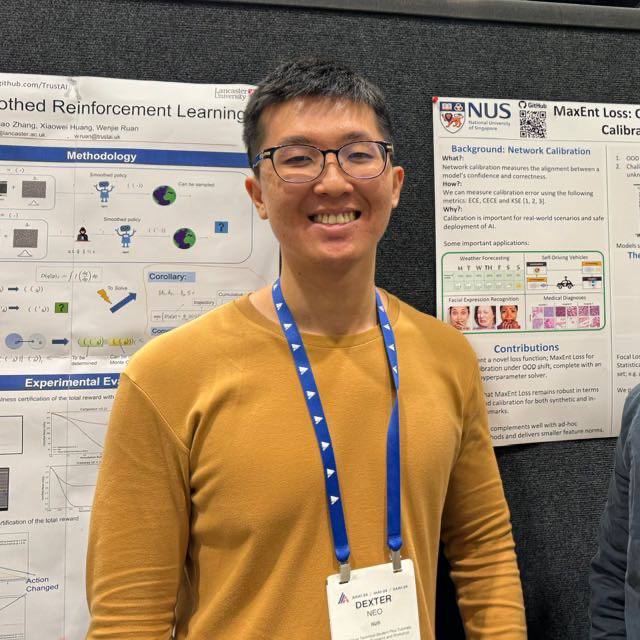
|
Research PublicationsMy research mainly focuses on Deep Neural Network Calibration , Uncertainty Quantification , Safe, Robust and Trustworty AI for computer vision and natural language tasks. I also dabble around with Facial Expression Recognition and Deep Reinforcement Learning . |
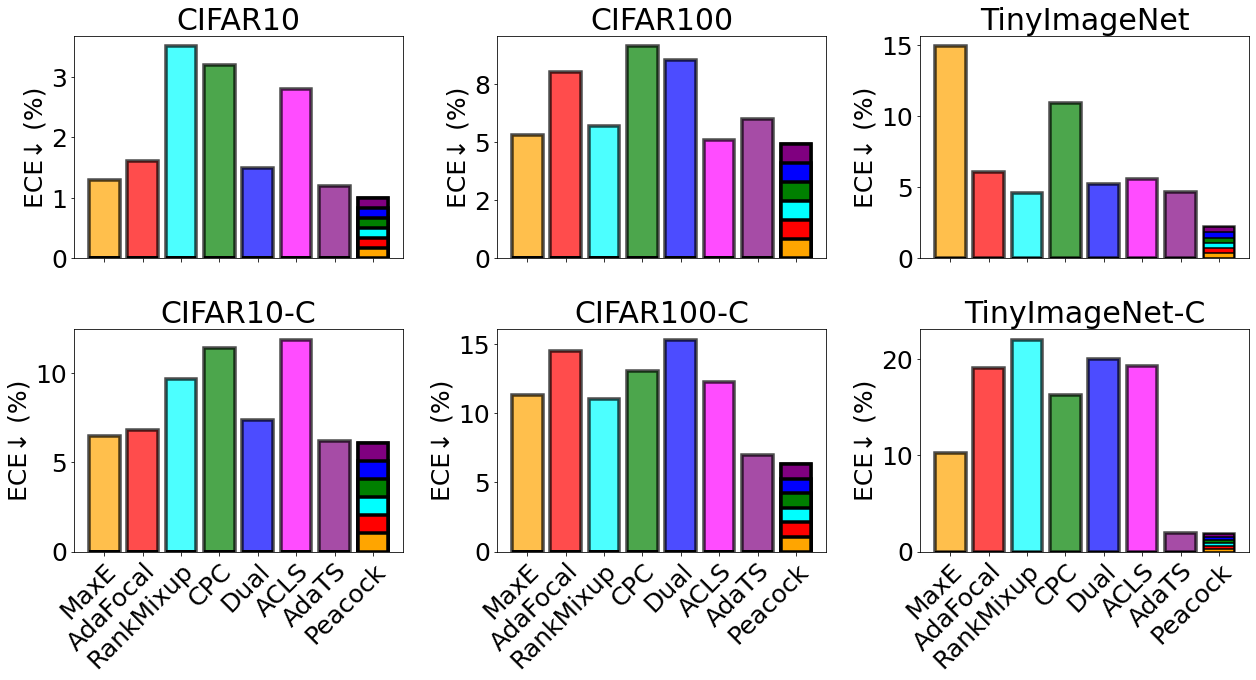
|
Multi-Objective Optimization for Deep Neural Network Calibration
Dexter Neo , Tsuhan Chen ICCVW Findings, 2025 [Hawaii, USA] The rapid adoption of deep neural networks underscores an urgent need for models to be safe, trustworthy and well-calibrated. Despite recent advancements in network calibration, the optimal unification of techniques remains relatively unexplored. By framing the task as a multi-objective optimization problem, we demonstrate that unifying state-of-the-art methods can further boost calibration performance. We feature a total of seven state-of-the-art calibration algorithms and provide both theoretical and empirical motivation for their equal and weighted importance unification. We conduct experiments on both in-distribution and out-of-distribution computer vision benchmarks, investigating the speeds and contributions of different components. |
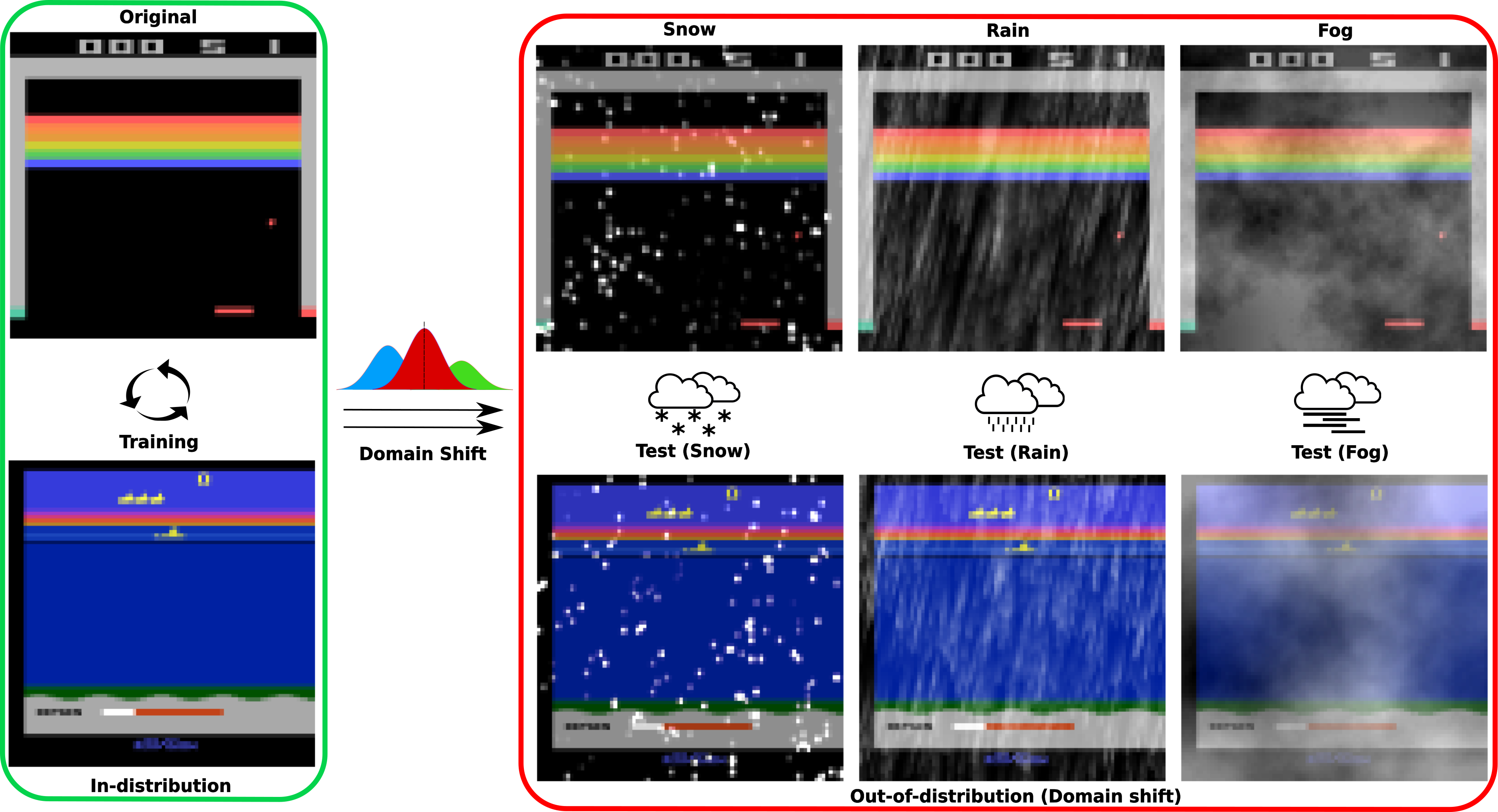
|
DSAC-C: Constrained Maximum Entropy for Robust Discrete Soft-Actor Critic
Dexter Neo , Tsuhan Chen IJCNN, 2025 [Rome, Italy] [Poster] arXiv We present a novel extension to the family of Soft Actor-Critic (SAC) algorithms. We argue that based on the Maximum Entropy Principle, discrete SAC can be further improved via additional statistical constraints derived from a surrogate critic policy. Furthermore, our findings suggests that these constraints provide an added robustness against potential domain shifts, which are essential for safe deployment of reinforcement learning agents in the real-world. We provide theoretical analysis and show empirical results on low data regimes for both in-distribution and out-of-distribution variants of Atari 2600 games. |
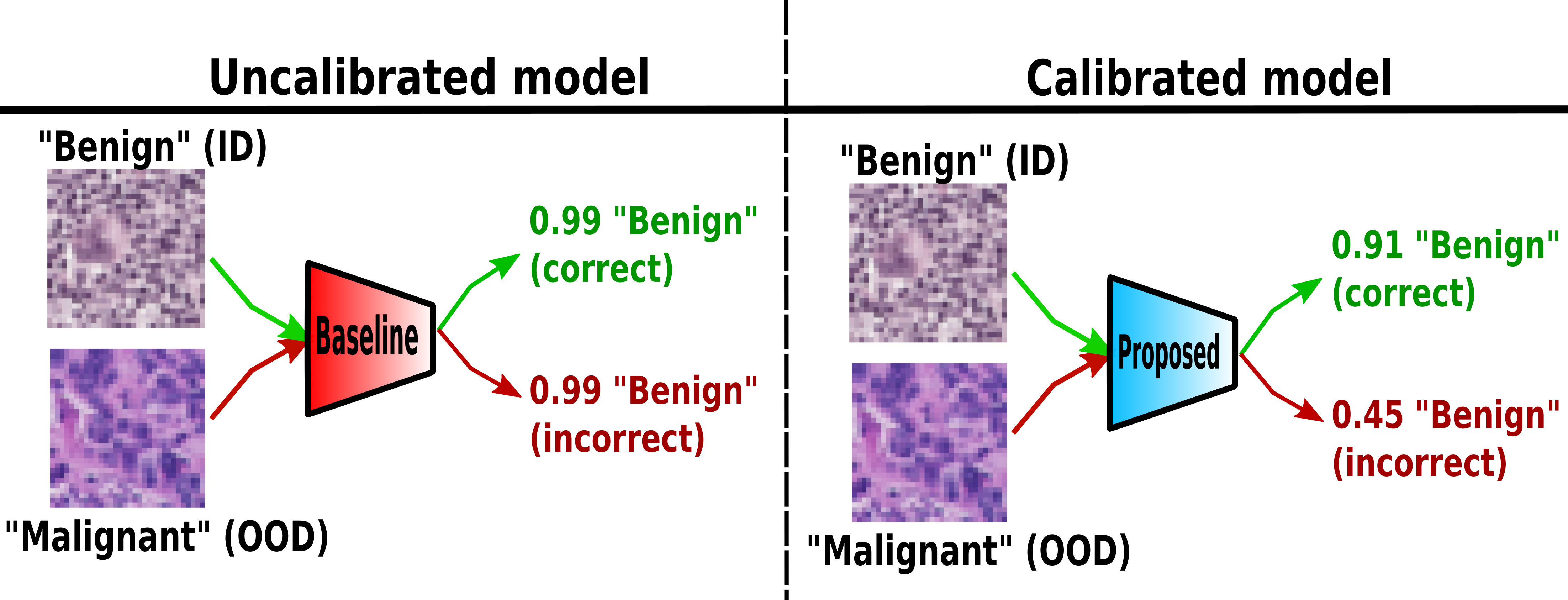
|
MaxEnt Loss: Constrained Maximum Entropy for Network Calibration under Out-of-Distribution Shift
Dexter Neo , Stefan Winkler, Tsuhan Chen AAAI, 2024 [Vancouver, Canada] [Oral Presentation*] arXiv / bibtex / code We present a new loss function that addresses the out-of-distribution (OOD) calibration problem. While many objective functions have been proposed to effectively calibrate models in-distribution, our findings show that they do not always fare well OOD. Based on the Principle of Maximum Entropy, we incorporate helpful statistical constraints observed during training, delivering better model calibration without sacrificing accuracy. We provide theoretical analysis and show empirically that our method works well in practice, achieving state-of-the-art calibration on both synthetic and real-world benchmarks. |

|
MaxEnt Loss: Calibrating Graph Neural Networks under Out-of-Distribution Shift (Student Abstract)
Dexter Neo AAAI, 2024 [Vancouver, Canada] [Poster] code In our abstract, we show that MaxEnt Loss can be to improve the calibration of Graph Neural Networks. |
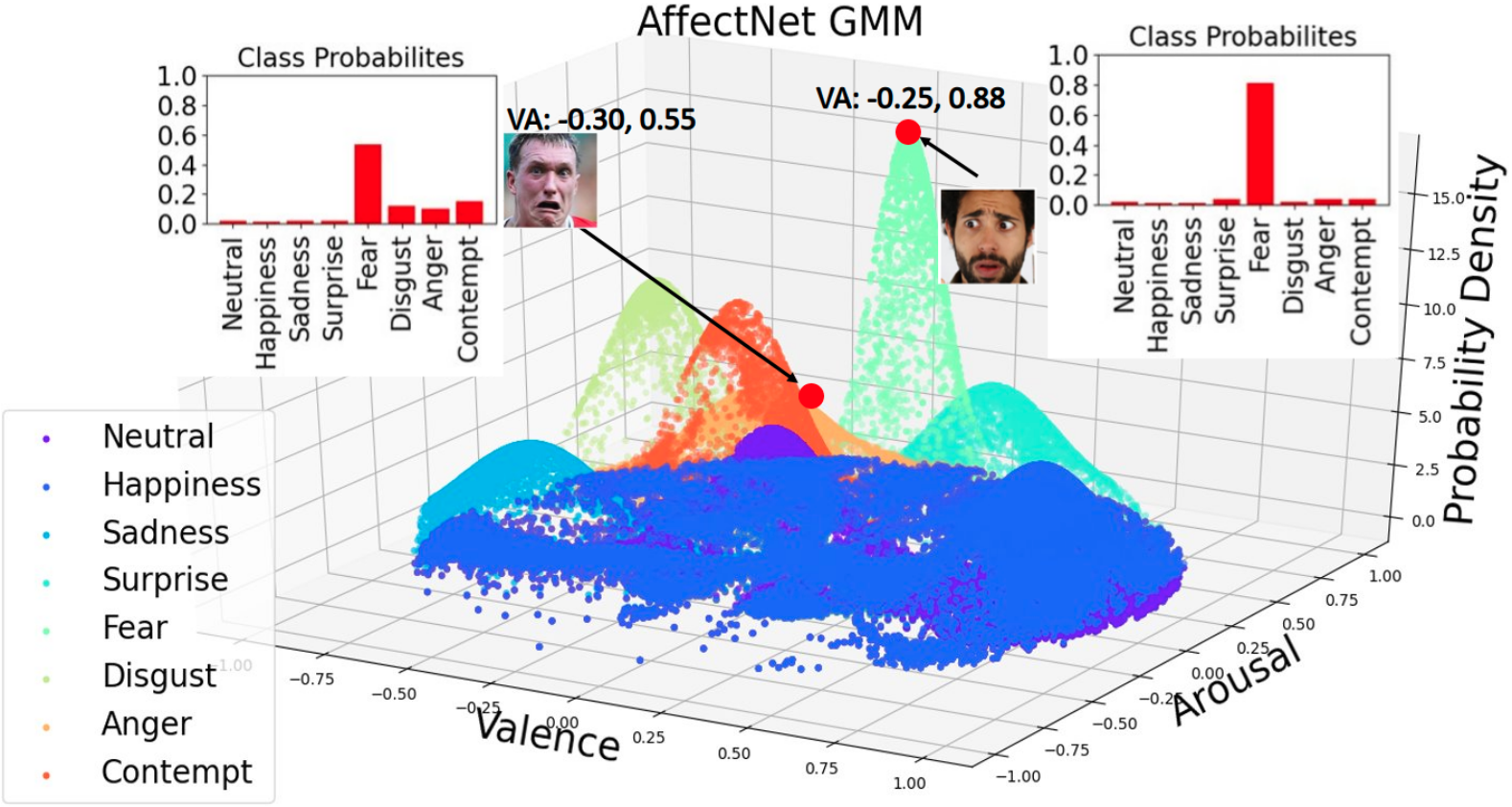
|
Large-Scale Facial Expression Recognition Using Dual-Domain Affect Fusion for Noisy Labels
Dexter Neo , Stefan Winkler, Tsuhan Chen CVPRW, 2023 [Vancouver, Canada] [Oral Presentation] paper / code In this paper, we propose an approach for dual-domain affect fusion which investigates the relationships between discrete emotion classes and their continuous representations. In order to address the underlying uncertainty of the labels, we formulate a set of mixed labels via a dual-domain label fusion module to exploit these intrinsic relationships.. |
|
|
Morphset: Augmenting Categorical Emotion Datasets
with Dimensional Affect Labels Using Face Morphing
Vassilios Vonikakis, Dexter Neo , Stefan Winkler ICIP, 2021 [Anchorage Alaska, USA] [Poster] arXiv / code We propose a method to generate synthetic images from existing categorical emotion datasets using face morphing as well as dimensional labels in the circumplex space with full control over the resulting sample distribution. |
PreprintsThese include primers, courseworks, side projects and ongoing research work.. |

|
Visual Ordinal Consistency Filter for Large Vision-Language Models
Dexter Neo , Tsuhan Chen arXiv Preprint arXiv / Fueled by the recent advancements in large language models, Large Vision-Language Models (LVLMs) have demonstrated remarkable capabilities. Despite their advancements, LVLMs are prone to ``hallucinations'' — a tendency to generate plausible but inaccurate information relative to the visual input. To address this, we introduce VORD, a simple and effective method that alleviates hallucinations by ``filtering'' token predictions based on ordinal relationships between modified image pairs. VORD is presented in two forms: 1.) a training objective function that encourages ordinal confidences and 2.) a minimalist inference-time variant which eliminates implausible tokens from modified image pairs. Extensive experiments across public benchmarks show that VORD effectively mitigates object hallucinations in LVLMs by up to 9.90%. |
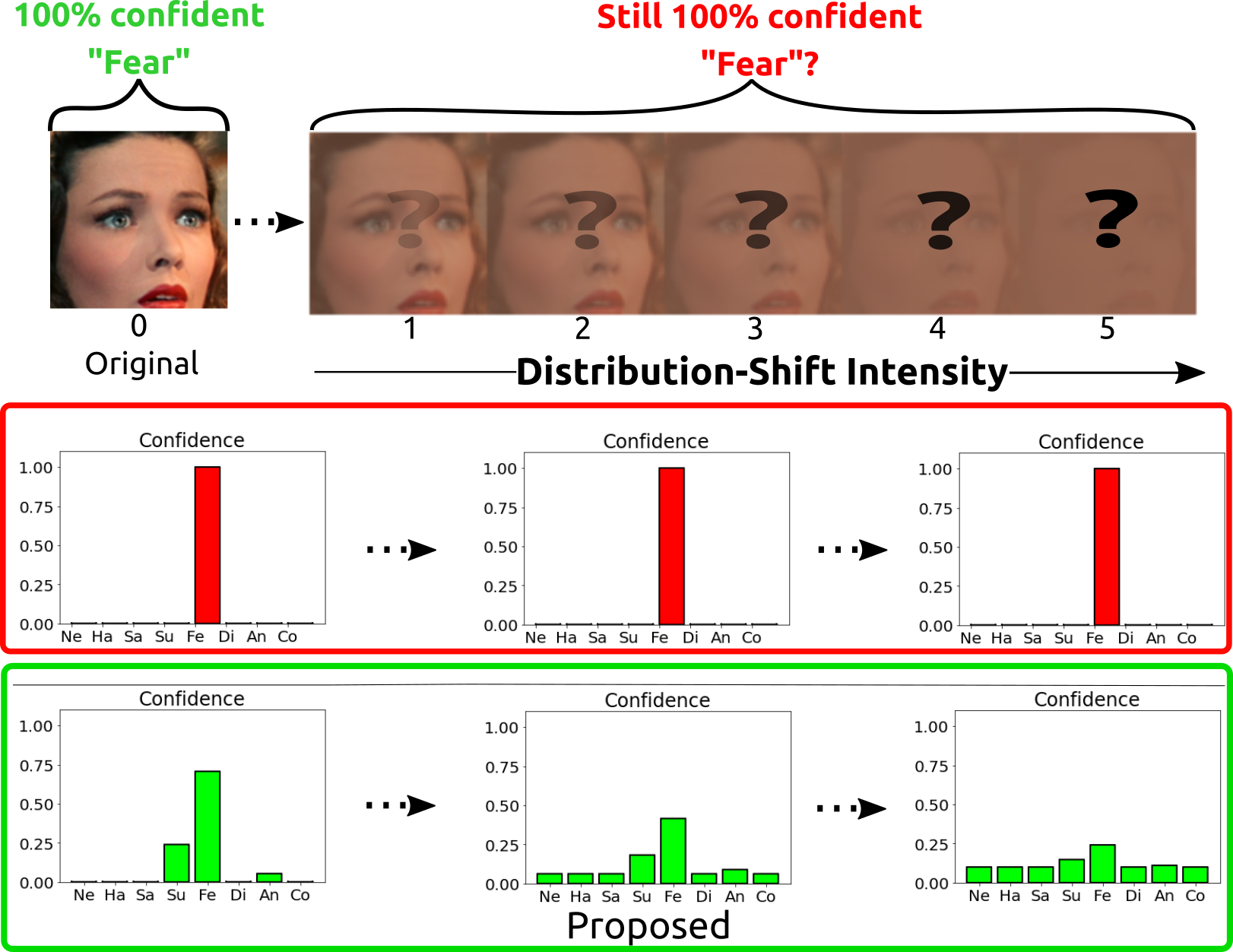
|
FER-C: Benchmarking Out-of-Distribution Soft Calibration for Facial Expression Recognition
Dexter Neo , Tsuhan Chen arXiv Preprint arXiv / code We present a soft benchmark for calibrating facial expression recognition (FER). While prior works have focused on identifying affective states, we find that FER models are uncalibrated. This is particularly true when out-of-distribution (OOD) shifts further exacerbate the ambiguity of facial expressions. While most OOD benchmarks provide hard labels, we argue that the ground-truth labels for evaluating FER models should be soft in order to better reflect the ambiguity behind facial behaviours. Our framework proposes soft labels that closely approximates the average information loss based on different types of OOD shifts. |
Professional Experience & Internships[2025] AI Engineer Intern, AI-Products Team @ AI-Singapore. (DSO-AISG, Singapore) [2024] Data Scientist Intern, Credit-Fraud Detection Team @ American Express. (American Express, Singapore) |
Awards[2024] DSO-AISG Incentive Award, $60,000 award for cutting edge research. (DSO-AISG, Singapore) [2024] Research Achievement Award, Award of $500 from the Department of Computer Science. (NUS, Singapore) [2023] Research Incentive Award, One-time award of $2500 from the Department of Computer Science. (NUS, Singapore) [2020] National Graduate Research Scholarship 2020. (NUS, Singapore) [2019] 3rd Place, Visual SLAM Competition, Award of $800 from the IEEE International Symposium of Mixed and Augmented Reality 2019. (Beijing, China) [2019] Engineering Excellence List, Head of School of Engineering. (University of Glasgow, UK) [2018] Engineering Excellence List, Head of School of Engineering. (University of Glasgow, UK) |
|
This website's source code is from Jon Barron, credits to the author. |